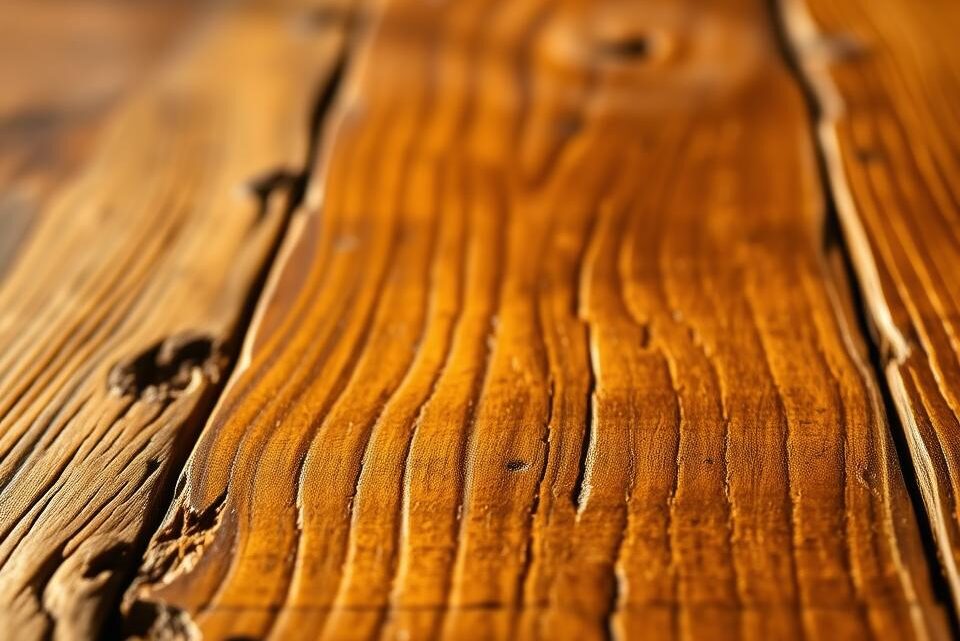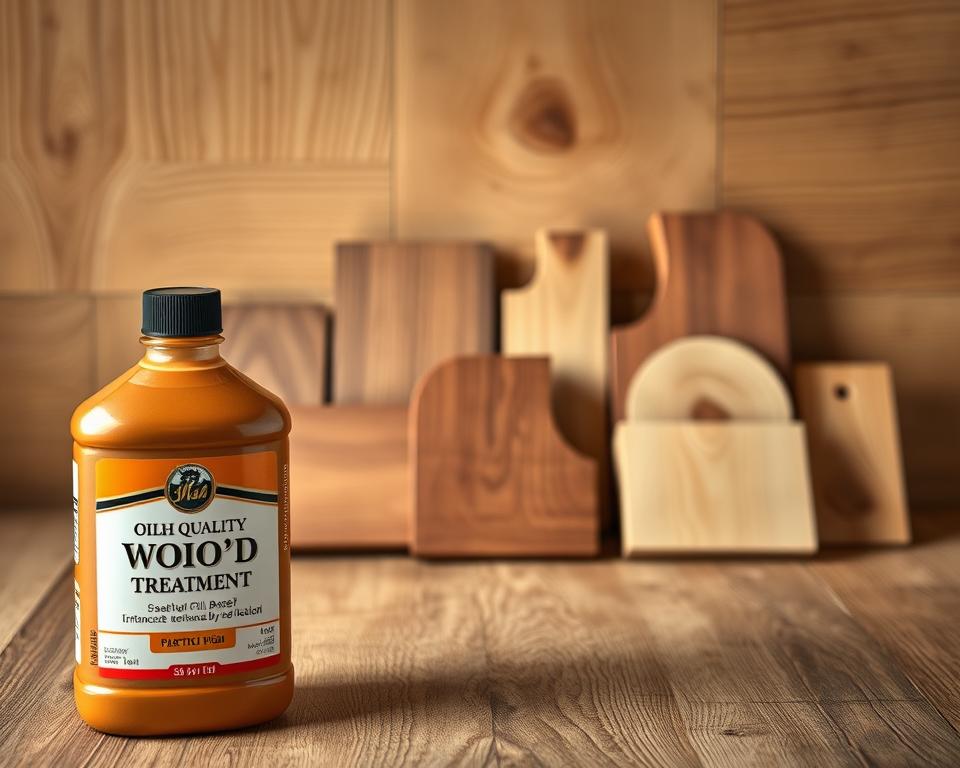Premium Oil Based Wood Treatment for Durability

Protecting timber structures from environmental damage is crucial for their longevity. Oil-based wood treatments have been a popular choice for preserving and protecting wooden surfaces. These treatments offer excellent coverage and absorption, nourishing and waterproofing timber to prevent weathering.
The use of premium oil-based formulations provides superior long-term protection against rot, decay, and insect infestations. By penetrating deeper into wood fibres, these treatments enhance durability and water resistance, making them ideal for various outdoor and indoor wooden structures.
Inhaltsverzeichnis
Key Takeaways
- Premium oil-based treatments provide long-lasting protection for timber structures.
- These treatments enhance durability and water resistance.
- They are suitable for various outdoor and indoor wooden structures.
- Investing in quality wood treatments can reduce long-term maintenance costs.
- Proper treatment selection is crucial for comprehensive protection.
Understanding Oil-Based Wood Treatments
When it comes to safeguarding wooden surfaces, oil-based treatments stand out for their superior penetration and protective qualities. Oil-based wood treatments are designed to provide long-lasting protection against various environmental factors that can damage wood.
What Are Oil-Based Wood Treatments?
Oil-based wood treatments are formulations that penetrate deep into the wood, offering protection from within. These treatments are available in both clear and coloured options, allowing homeowners to maintain the natural look of their wood or add a touch of colour. For complete protection against rot, mould, and insect attack, applying a Wood Preserver before an oil-based shed paint or other treatment is recommended.
Wood Preservers vs. Wood Protectors: Key Differences
The primary difference between wood preservers and wood protectors lies in their function. Wood preservers are designed to prevent rot and insect damage, while wood protectors offer a barrier against environmental factors. Understanding these differences is crucial for selecting the right product for your wood protection needs.
Benefits of Oil-Based Formulations for Long-Term Protection
Oil-based formulations offer several benefits, including:
- Superior penetration capabilities, allowing for deeper protection of wood fibres.
- Enhanced water-repellent properties, creating a hydrophobic barrier that prevents moisture ingress.
- Flexibility, as they allow wood to breathe naturally while providing protection.
- Aesthetic benefits, enhancing the natural grain and beauty of wood with a range of finish options.
- Economic advantages, requiring less frequent reapplication and offering better value over time.
By choosing oil-based treatments, homeowners can ensure their wooden surfaces receive long-lasting protection while maintaining their natural beauty. For a product that offers both protection and a finish, consider an oil-based treatment for your next wood project.
Types of Oil-Based Wood Treatments
The use of oil-based wood treatments has become a standard practice for ensuring the durability of wood. These treatments are designed to protect timber from various forms of damage, including rot, decay, and insect infestation.
Premium Wood Preservers with Biocides
Premium wood preservers that contain biocides offer enhanced protection against wood-boring insects and fungal decay. These products are particularly effective for treating structural timbers, such as roof and floor joists, that are critical to the integrity of a building.
Wood Protective Treatments for Pre-Treated Timber
For timber that has already been pre-treated, additional protective treatments can be applied to further enhance its durability. These treatments can help to maintain the integrity of the timber, even when exposed to harsh environmental conditions.
Pre-treated timber can benefit from supplementary treatments that provide an extra layer of protection against mould and other forms of damage.
Universal Preservers as Primers
Universal preservers serve as versatile primer treatments, designed to provide baseline protection before applying finishing coats. These products are particularly useful for structural timber elements, such as joists and rafters, that require a robust protective system.
Barrettine Universal Preserver is a leading product in this category, offering a clear formulation that can be used on bare wood before applying a topcoat. It contains biocides that protect against wet rot, decay, and wood-boring insects.
By understanding the different types of oil-based wood treatments available, individuals can make informed decisions about the best products to use for their specific needs, ensuring that their timber structures remain protected and durable over time.
Choosing the Right Oil-Based Wood Treatment for Your Project
Selecting the appropriate oil-based wood treatment is crucial for the longevity and durability of your wood project. The right treatment not only protects the wood but also enhances its appearance, ensuring it remains in good condition for years to come.
Assessing Your Wood Type and Condition
The type and condition of your wood are critical factors in determining the most suitable oil-based treatment. Different woods have varying levels of porosity and resin content, which can affect how the treatment is absorbed and how it performs over time. For instance, natural oily or resinous woods and tight grain hardwoods may require longer to dry and cure completely. It’s essential to assess your wood type to choose a product that complements its characteristics.

Indoor vs Outdoor Applications
The intended use of your wood project significantly influences the type of oil-based treatment you should use. Outdoor applications expose wood to harsh weather conditions, requiring treatments with higher UV protection and water resistance. In contrast, indoor applications may prioritize aesthetic finish and durability without the need for extreme weather resistance. Understanding the environment your wood will be exposed to is key to selecting the right product.
Colour Options and Finish Considerations
Oil-based wood treatments come in a variety of colours and finishes, allowing you to enhance or maintain the natural appearance of your wood. Whether you’re looking for a clear finish or a specific hue, the right treatment can achieve the desired look while providing protection. Consider the colour and finish you want to achieve, as well as the level of sheen, when selecting your treatment.
“The right wood treatment not only protects but also beautifies your woodwork, ensuring it remains a valuable and attractive part of your home or garden for years to come.”
Coverage and Longevity Factors
Calculating the correct coverage and understanding the longevity of your chosen oil-based wood treatment are vital for its effectiveness. Factors such as wood porosity, surface area, and the specific product being used influence coverage. Additionally, exposure levels, wood type, application technique, and maintenance practices affect how long the treatment lasts. A well-applied treatment can provide long-lasting protection, but it’s also important to follow the manufacturer’s guidelines for reapplication.
| Wood Type | Typical Coverage (litre/m²) | Expected Longevity (years) |
|---|---|---|
| Softwoods | 4-6 | 5-7 |
| Hardwoods | 6-8 | 7-10 |
| Resinous Woods | 3-5 | 5-8 |
By considering these factors and choosing the right oil-based wood treatment, you can ensure your wood project remains protected and looks great for years to come.
Top Oil-Based Wood Treatments in the UK Market
The UK market offers a diverse range of oil-based wood treatments, each with its unique benefits and applications. For those seeking premium products, several stand out for their quality and effectiveness.
Barrettine Premier Wood Preserver
The Barrettine Premier Wood Preserver is a highly-regarded product for its ability to provide long-lasting protection against woodworm and rot. It is suitable for various wood types and is easy to apply.
Ronseal 5 Star Complete Treatment
Ronseal 5 Star Complete Treatment is a comprehensive solution that not only protects against rot and woodworm but also provides a decorative finish. It’s ideal for outdoor woodwork, including decking and fencing.
Roxil Wood Waterproofing Liquid
Roxil Wood Waterproofing Liquid is designed for superior water repellency, making it perfect for high-moisture applications such as decking, fencing, and garden structures. Its clear formula allows for a natural finish.
Each of these products offers unique benefits, from comprehensive preservation to specialised water repellency, catering to different needs and applications in the UK.
Conclusion
In conclusion, selecting the right oil-based wood treatment is crucial for the longevity of your wooden structures. Throughout this article, we have discussed the importance of understanding different types of wood treatments, including preservatives and protectors. By choosing the appropriate wood treatment, you can ensure comprehensive protection against damage and rot.
Investing in quality wood preservatives and treatments extends the lifespan of your timber. Consider both immediate protection needs and long-term maintenance when selecting and applying oil-based treatments. For new garden structures, restoration projects, or maintenance, the right product will provide protection and value.
FAQ
What is the best way to apply a wood preserver to sawn smooth timber?
To achieve optimal results, ensure the timber is dry and free of debris. Apply the preserver liberally using a brush or spray, making sure to cover all surfaces evenly.
How long does a wood protective treatment last on garden furniture?
The longevity of a wood protective treatment on garden furniture depends on various factors, including the type of treatment used, exposure to the elements, and maintenance. Typically, a high-quality treatment can last for several years.
Can I use a wood preserver on pre-treated timber?
Yes, you can use a wood preserver on pre-treated timber, but it’s essential to choose a product compatible with the existing preservative. Always check the manufacturer’s instructions before application.
What is the difference between a wood preserver and a wood sealer?
A wood preserver is designed to protect timber from rot, mould, and insect damage, while a wood sealer provides a barrier against the elements, often with a decorative finish. Both products can be used together for comprehensive protection.
How do I know if my decking needs a wood preservative?
Inspect your decking regularly for signs of wear, such as discolouration, rot, or damage from insects. If you notice any of these issues, consider applying a wood preservative to protect the timber and extend its lifespan.
Are wood protective treatments suitable for indoor use?
While some wood protective treatments are designed for outdoor use, others can be used indoors. Always check the manufacturer’s instructions to ensure the product is suitable for your specific application.

